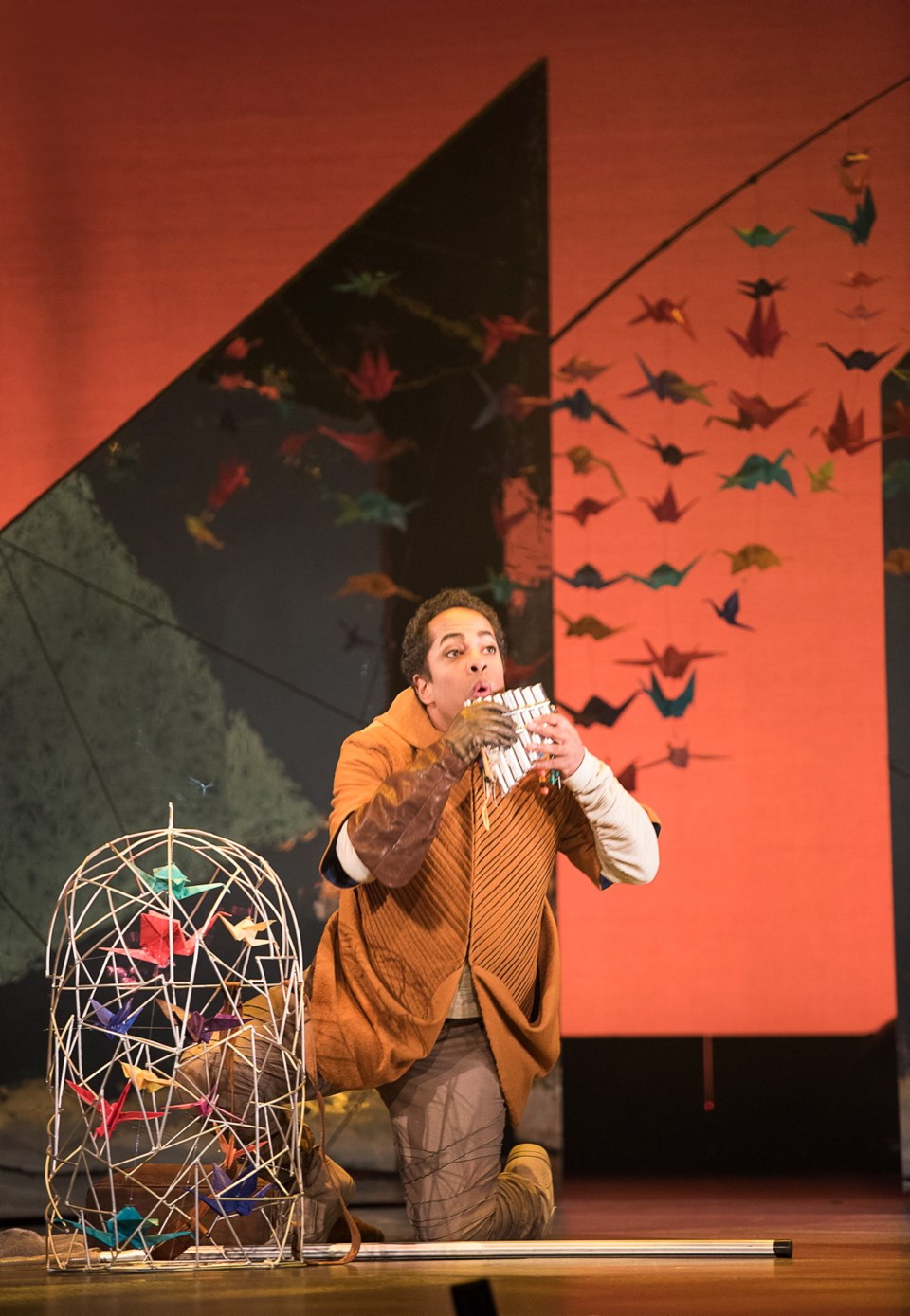REVIEW
What: The Magic Flute
Where: Royal Theatre
When: Continues today, Feb. 22, 24, 26
Rating: three (out of five)
The Magic Flute’s plot seems peculiar even by opera standards.
We know Mozart’s romp is intended as a fairy tale crammed with mysterious freemasonry motifs. (For fun, count the times the number three — an important masonic symbol — pops up: the three majestic chords in the overture, the three ladies-in-waiting, etc.)
That said, it can be mind-boggling to navigate your way through the serpents, padlocked bird-catchers, spooky genii, magic bells and flutes, strange rites of passage and so on.
Pacific Opera Victoria’s new production, while it offers its share of pleasures, is something of a mixed bag. Thursday’s opening-night performance featured some good singing, particularly from creamy voiced soprano Simone Osborne as Pamina and Sharleen Joynt as a striking Queen of the Night. And the Victoria Symphony, under Timothy Vernon’s baton, successfully mined the nuances and shadings in the brilliant score.
Yet when it comes to visuals, this version — sung in German with an English-language libretto — is rather mystifying. To say mirrors dominate the design is an understatement. In the program, director Oriol Tomas explains the giant mirrored set-pieces, prism-shaped, are intended to recall pyramids in Egypt, where the opera takes place. They’re a visual metaphor for an opera that is “a game of mirrors, of illusions, of reflections.”
Fair enough. But these jumbo mirror-prisms, flashing reflected spotlights, bring to mind the kind of futuristic 1970s nightclub one might see in A Clockwork Orange. It’s peculiar and a bit cheesy, particularly when these assemblages are awkwardly shunted about for scene changes.
It seems half the cast is outfitted with their own personal mirror. The ladies-in-waiting each get a big round one. Sarastro’s henchmen lumber about with suitcase-style versions. Sometimes the latter don metallic silver masks which, when the light strikes them, create a risible space-alien effect.
The space-alien theme pops up elsewhere, too. The three genii — charmingly played by children — resemble E.T. when they don hoodies ringed by lights. Other performers waved what looked like light sabres.
Opera is mostly about the singing, of course. But the look of this Magic Flute is so idiosyncratic, it deserves further comment.
As Pamina, Osborne sports a spectacularly unflatteringly boxy 1960s-style dress. Her love interest, Tamino (Adam Luther), embraces a vaguely Japanese look with his samurai pony-tail and kimono-like robe.
Some denizens of Sarastro’s temple wear what look like kilts and pullovers. The latter, for some reason, bring to mind Star Trek.
Created in 1791 as a popular entertainment, The Magic Flute juxtaposes low-brow comedy and high drama. For example, we have a regal Sarastro (sung rather stiffly by bass Jeremy Bowes) declaiming to his grim-visaged minions in a lordly manner.
The flip side is Papageno, the lonely wine-swilling bird-catcher, played mostly for laughs by baritone Justin Welsh.
Director Tomas has the cast utter its lines in a broad manner reminiscent of children’s theatre. Certain scenes, such as a banquet that resembles a kid’s birthday party, amplify the effect.
Welsh, the most spirited and naturalistic performer, has the most success with this. Elsewhere, the acting too often seemed wooden.
Luther as Tamino had his moments, such as his aria upon seeing Pamina’s image for the first time. However, on this night the most stirring singing was provided by the women.
Osborne seemed to grow in confidence as the evening progressed. She impressed particularly with Ach, ich fuhl’s, es is verschwunden, the lovely aria Pamina sings when Tamino seems to ignore her.
Joynt is an unforgettable Queen of Night, bull’s-eyeing inhumanly high notes like a sharp-shooter. This coloratura soprano has a lovely, pure voice; her phrasing was nicely controlled and her projection was admirable.
For her final aria, Joynt appeared in a spectacular tent-like gown that made her three metres tall. Mirrored by two flanking set pieces, she was a remarkable sight.
HHH
In October, Atom Egoyan will direct Jenufa by Leos Janacek, POV has announced. The 2017-2018 season will also include Puccini’s La Bohème, directed by Maria Lamont, and Handel’s Rinaldo, directed by Glynis Leyshon.



